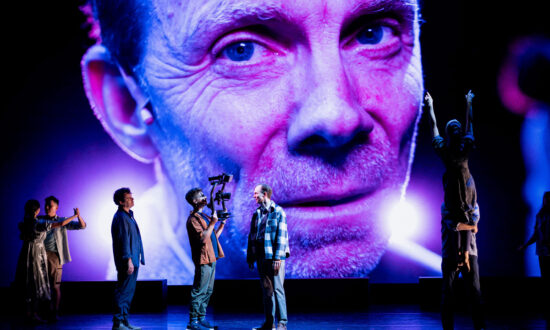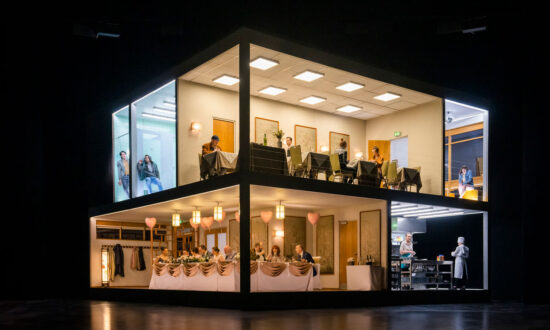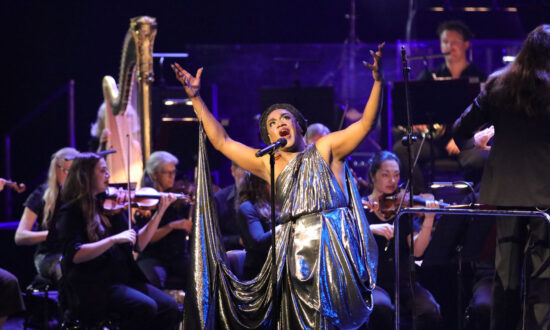Festival-goers have no doubt shaken their heads in wonder at the miracle of being able to attend performances again this year, when most arts festivals around the world have been cancelled. The international acts in the 2021 program had to be presented in innovative ways using live-streamed, high-definition projections on screen, and there were, of course, far fewer than usual, but this has created space for ambitious productions of new work by home-grown talent like Lewis Major.
Raised on a sheep farm near Robe and educated in Adelaide, Lewis says he became obsessed with dance after seeing Garry Stewart’s Birdbrain performed by Australian Dance Theatre during a regional tour in 2000. Later, during a six-year stay in Europe, he gleaned all he could from the contemporary dance scene there, bringing his expanded worldview back to Adelaide.
While live-streamed performances bring certain advantages granted by close-ups and panning cameras – apart from the not inconsiderable privilege of being able to see them at all – nothing quite beats the heart-quickening thrill of a live performance.
Unfolding, which opens Major’s double bill, amply fulfils expectations. It begins quietly, gradually, with four dancers (Clementine Benson, Sam Hall, Stefaan Morrow and Sarah Wilson) in minimal black costume (designed by Naomi Murrell), clustered half in shadow in the centre of the darkened, empty stage. A soft high note on a keyboard, reminiscent of the submarine loneliness of the opening of Pink Floyd’s “Echoes”, expands into an ethereal, ambient soundscape as the white light intensifies into a line that sweeps back and forth in the dark like a scanner.
Picking up pace, it splits into two, shadow and white light rippling and pulsing to form the base of a pyramid inside which the dancers flow and coil with lithe, liquid limbs as if underwater, then break apart into pairs to dance in formations at once familiar and strange.
The beautiful, animated illumination, perfectly synchronised with the unfurling beats of the music and the movements of the dancers, becomes a crucial element in the performance, creating dizzying, beautiful illusions of narrow, spinning bridges of light on which the dancers appear to balance, or round petri-dish constellations of tiny white stars that pour over the bodies of the two female dancers, who, having removed their black costumes, become vulnerably, beautifully human as they curl and intertwine in the living light.
Collaborating with composer James Brown and lighting designer Fausto Brusamolino during lockdown, Major began creating Unfolding with the aid of a motion-tracking suit in a 3D virtual environment coded in a video game lab. The animated light bears something of the hyper-real, glitch-pulse feel of video games, but it is no less striking or original for that, providing a foil for the visceral sense of isolation and yearning for human connection contained within the choreography.

S/WORDS: Dancers run and weave about in a state of revolution, in protest or in flight, in despair or joyous abandon. Photo: Andrew Beveridge
Next comes S/WORDS, which Major began working on with Brown and Brusamolino before the pandemic, but which resonates with our current sense of a world upturned. The four dancers of Unfolding are joined by eight others (Paulo Castro, Sam Coren, Christopher Dyke, Lily Potger, Michael Ramsey, Sophia Van Gent, Georgia Van Gils and Jo Stone) to form a raggle-taggle tribe dressed in an assortment of everyday clothes.
The stage is set with rows of folding chairs arranged around a long table, a theatre within a theatre, where the tribe appears to be bunkered as the world disintegrates outside. “WORDS” is projected in light onto the wall. A world-weary, prophetic voice rises above the soundscape, speaking of a world in darkness, of a “keeper of the word”, evoking those liminal moments in the work of Akram Khan in his collaborations with musician Nitin Sawhney.
The theatricality and narrative expression of S/WORDS, the work of dramaturg Lou Cope, provides a stark and effective contrast to Unfolding. After a bout of drinking and smoking together, toasting the end of the world, the drunken levity ends and a male dancer, the keeper of words, holds pieces of folded paper, which, after failed attempts to pass them to others in the tribe, are eventually thrown into the audience as the performance reaches its climax.

Get InReview in your inbox – free each Saturday. Local arts and culture – covered.
Thanks for signing up to the InReview newsletter.
There are echoes of the influence of those contemporary dance greats Major has mentioned as mentors; Garry Stewart, Akram Khan and especially of Hofesh Shechter, whose wild, bass-beat-driven, end-of-times dance in Grand Finale, which came to Adelaide in 2019, comes especially to mind. There are Pina Bausch-esque moments, too, invited by the scratchy, nostalgic old-time tunes played on a Victrola, while a row of seated dancers measures out meaning with signalling gestures.
S/WORDS is an ambitious work, and while there are moments that might welcome a little tightening, and some precarious use of chairs as props which distracted somewhat from the beautiful duet they framed, the epic weight of the performance belies the relatively short run time.
In the final, smoke-filled, chaotic scene, the 12 highly expressive, skilled and committed dancers run and weave about in a state of revolution, in protest or in flight, in despair or joyous abandon as another wields a large flag of protest, victory or surrender. It infuses us with a sense that amid chaos and uncertainty, we have a choice, and that the sheer force and vitality of the human spirit will prevail.
Lewis Major’s work Satori – the Japanese word for enlightenment – premieres at the Festival Theatre on April 22 as part of The Move, curated by Dance Hub, The Mill and AusDance SA. It’s something to look forward to, as he’s definitely one to watch.
Lewis Major’s double bill Unfolding and S/WORDS is being presented at the Space Theatre until March 14 as part of the Adelaide Festival.
Read more Adelaide Festival stories and reviews here.
Support local arts journalism
Your support will help us continue the important work of InReview in publishing free professional journalism that celebrates, interrogates and amplifies arts and culture in South Australia.
Donate Here




